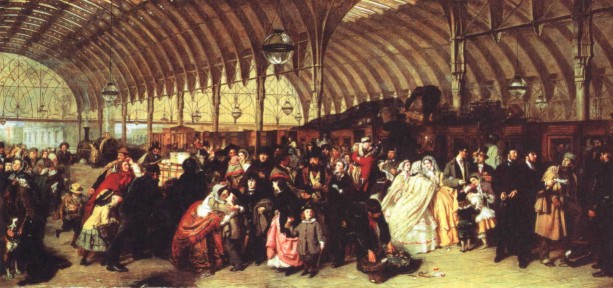William Powell Frith (1819-1909) is principally remembered, when he is remembered at all, as a pillar of the Victorian art establishment – a tediously circumstantial painter of the nineteenth century social scene, whose most famous work, Derby Day, although a blockbusting sensation in its time, has long since been relegated to the status of a mere period piece. Now, almost a hundred years after his death, a new exhibition at the Guildhall Art Gallery seeks to rekindle interest in Frith and all his works. Curated by Vivien Knight – who has also co-edited the exemplary book-length catalogue – it is an absorbing show, which reveals this much neglected artist to have been both a more subtle painter, and a rather more complicated man, than his current obscurity might suggest.

William Powell Frith at the Guildhall Art Gallery 2006
12-11-2006
At the peak of his fortunes, Frith was arguably the most successful British artist ever to have lived. When he first exhibited Derby Day, at the Royal Academy’s annual exhibition in 1857, the picture attracted such a crush that a railing had to be set up to protect it from the crowds (a number of elderly academicians were so consumed with jealousy, Frith noted in his later Reminiscences, that they took to their beds for several days in a collective funk). Nearly two decades later, in 1875, his relatively slight and anecdotal illustration of a scene from Boswell’s Life of Johnson, Before Dinner at Boswell’s Lodgings, sold at auction for what was, at the time, the highest price ever realised for a work of art by a living painter.
By the economic standards of the day, he had become a multi-millionaire. At the time of Frith’s greatest prosperity he lived, with his wife Isabelle and their large brood of children, in Pembridge Villas, part...

